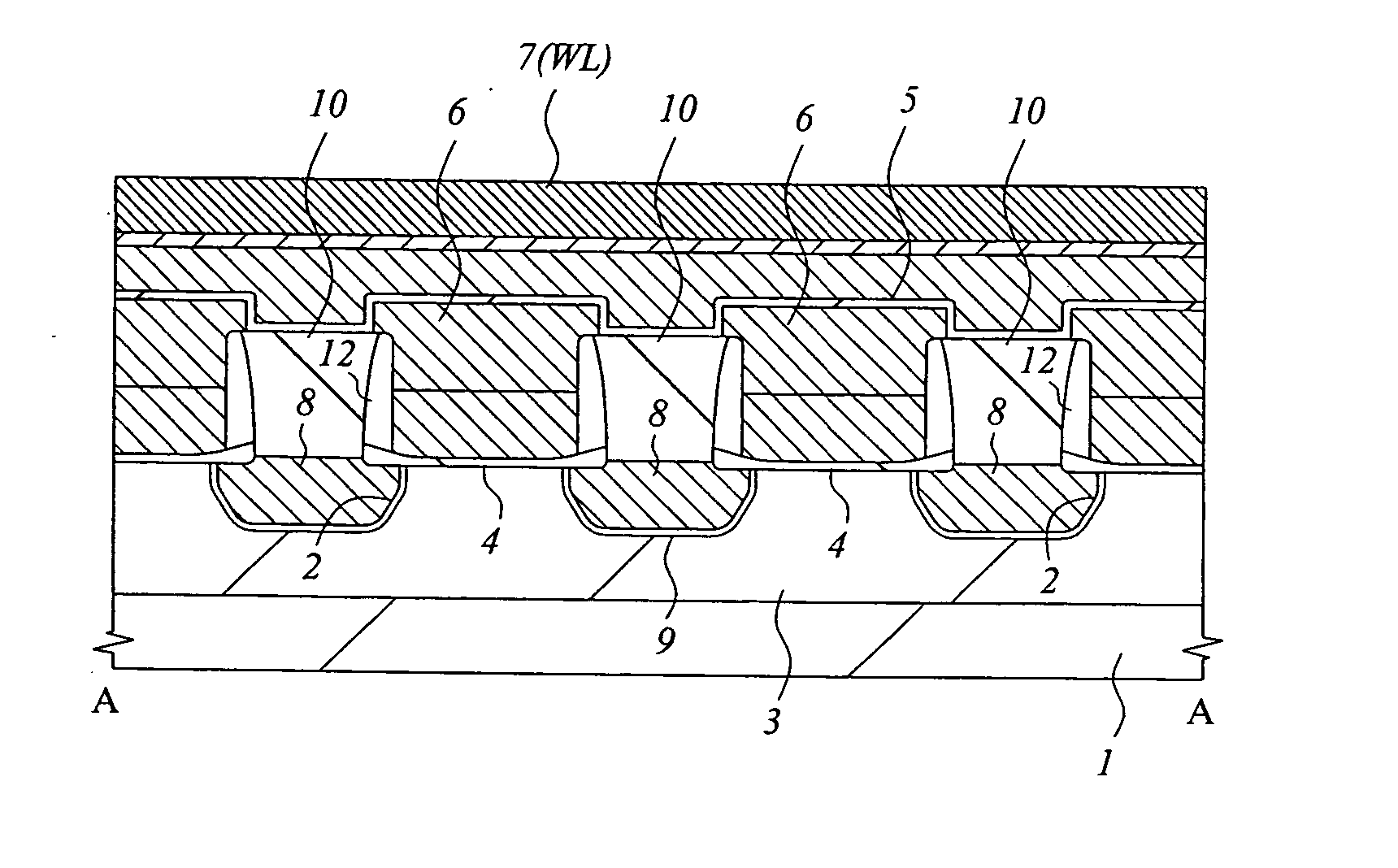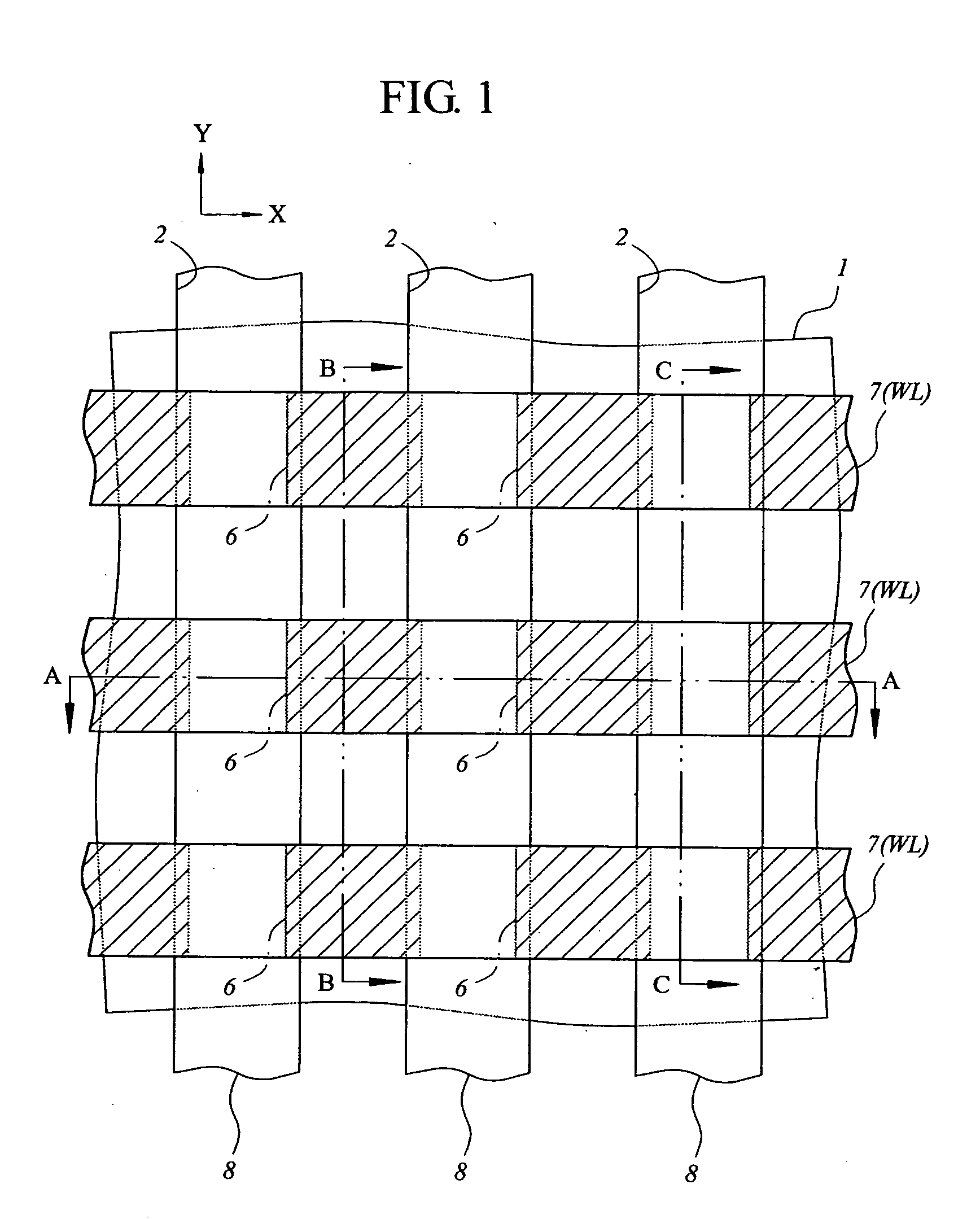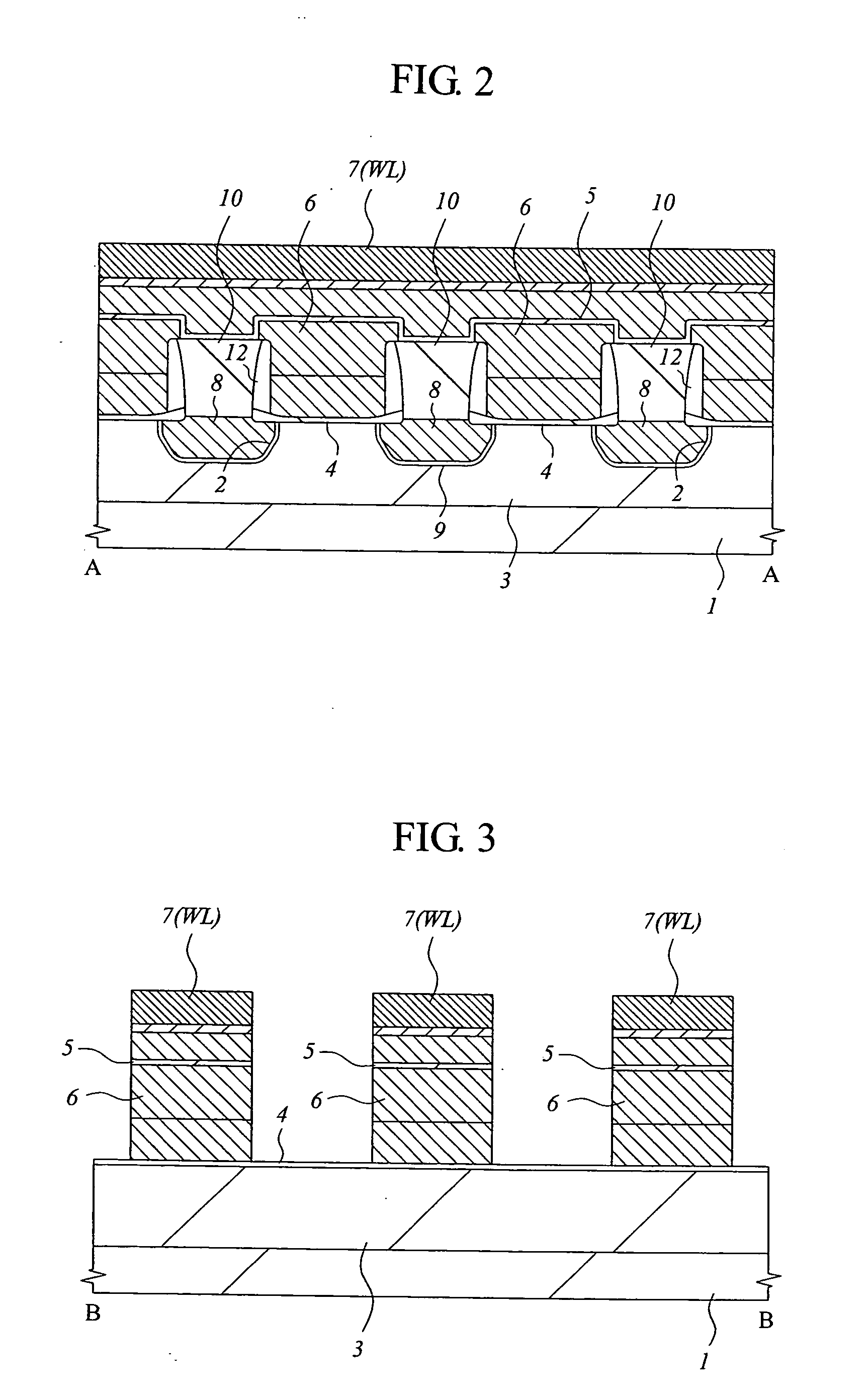Nonvolatile semiconductor memory device and manufacturing method thereof
a semiconductor memory and non-volatile technology, applied in the direction of digital storage, instruments, transistors, etc., can solve the problems of increasing the thickness of the insulator film electrically isolating the two gate electrodes constituting the split gate, and the unignorable size of the data-line pitch by this method, so as to reduce the electrical resistance of the diffusion layer, reduce the punch, and ensure the effect of reading speed
- Summary
- Abstract
- Description
- Claims
- Application Information
AI Technical Summary
Benefits of technology
Problems solved by technology
Method used
Image
Examples
first embodiment
[0067] (First Embodiment)
[0068]FIG. 1 is a plan view showing the principal part of a memory array structure of a semiconductor memory device according to a first embodiment of the present invention; FIG. 2 is a sectional view showing the principal part of a semiconductor substrate taken along the line A-A in FIG. 1; FIG. 3 is a sectional view showing the principal part of a semiconductor substrate taken along the line B-B inFIG. 1; and FIG. 4 is a sectional view showing the principal part of a semiconductor substrate taken along the line C-C in FIG. 1. Note that some components such as an insulator film are omitted in FIG. 1 (plan view) in order to make the drawing easy to see.
[0069] A semiconductor memory device according to this embodiment is a so-called flash memory, and has a memory array in which a plurality memory cells are formed in and on a p type well 3 disposed on a main surface of a semiconductor substrate (hereinafter “substrate”) 1 made of single crystal silicon. Each ...
second embodiment
[0094] (Second Embodiment)
[0095] In the first embodiment, the inversion layer formed by applying the positive voltage to the buried gate (third gate electrode) 8 is used as the data line. However, it is also possible to further provide a diffusion layer 20 in the substrate 1 (p type well 3) disposed below the buried gate (third gate electrode) 8, as shown in FIGS. 21 and 22.
[0096] The diffusion layer 20 is formed in the following manner. First, as shown in FIG. 23, the patterns (P) composed of a stacked film of the silicon nitride film 11 and the polysilicon film 6a are formed over the substrate 1 (p type well 3) via the first gate insulator film 4, and then the sidewall spacers 12 are formed on the sidewalls of the patterns (P). Thereafter, the grooves 2 are formed in the substrate 1 disposed below the space regions between the patterns (P). The process until then is identical to that in the first embodiment shown in FIGS. 7 to 11.
[0097] Next, as shown in FIG. 24, an n type impur...
third embodiment
[0101] (Third Embodiment)
[0102] In the second embodiment, the diffusion layer 20 is provided below all of the buried gates 8 formed in the memory array. However, the diffusion layer 20 may be provided only below the predetermined buried gates 8, as shown in FIG. 27.
[0103] In this case, as shown in FIG. 28, a photoresist film 30 is formed to cover the groove 2 in which the diffusion layer 20 is not formed when an n type impurity is ion-implanted into the substrate 1 in the process as shown in FIG. 23 in the second embodiment.
[0104] The operation of the memory cell will be described with reference to FIGS. 29 and 30. In the reading operation, as shown in FIG. 29, of the buried gates 8 on both sides of the selected memory cell, a voltage of about 5 V is applied to the buried gate 8 not having the diffusion layer 20, and a voltage of about 1 V is applied to the inversion layer thereof. Also, a voltage of about 3 V is applied to the buried gate 8 having the diffusion layer 20, and the ...
PUM
 Login to View More
Login to View More Abstract
Description
Claims
Application Information
 Login to View More
Login to View More - R&D
- Intellectual Property
- Life Sciences
- Materials
- Tech Scout
- Unparalleled Data Quality
- Higher Quality Content
- 60% Fewer Hallucinations
Browse by: Latest US Patents, China's latest patents, Technical Efficacy Thesaurus, Application Domain, Technology Topic, Popular Technical Reports.
© 2025 PatSnap. All rights reserved.Legal|Privacy policy|Modern Slavery Act Transparency Statement|Sitemap|About US| Contact US: help@patsnap.com



